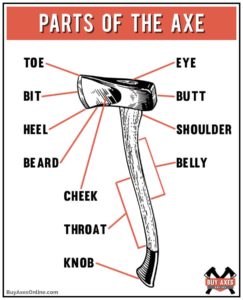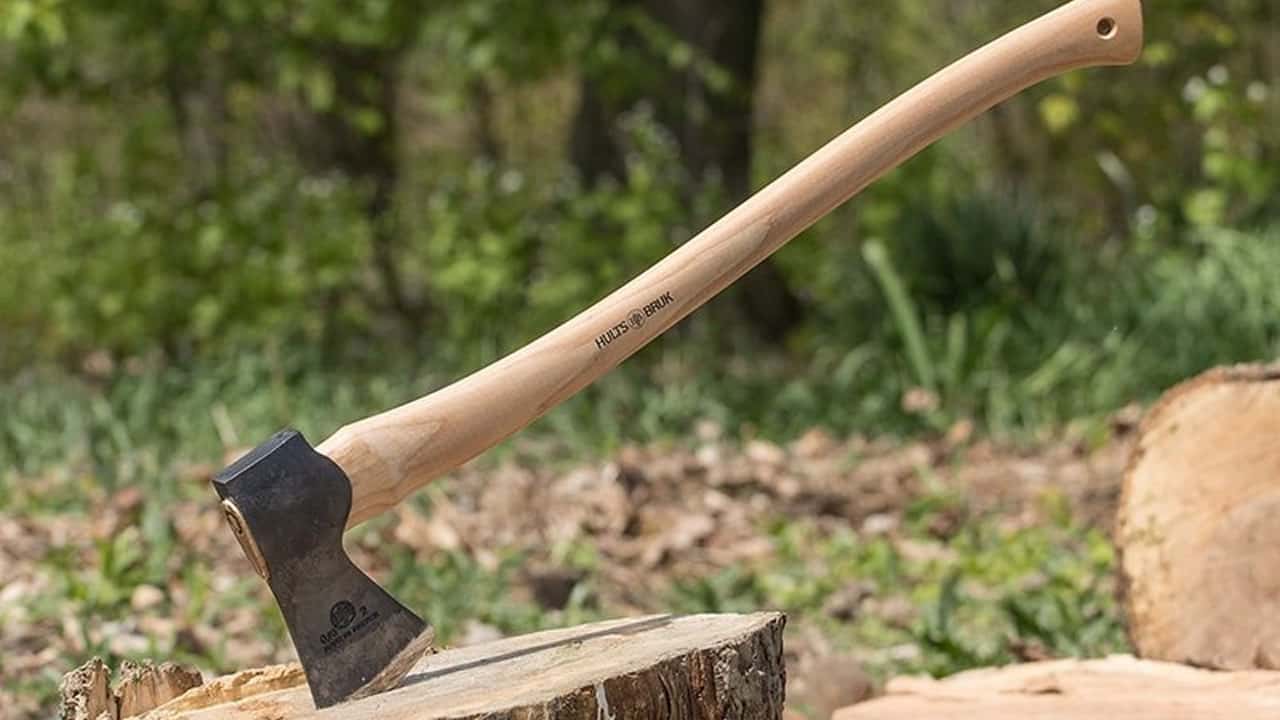Felling axes have been a vital tool for woodsmen, outdoors enthusiasts, and survivalists for centuries. These axes are specifically designed for cutting down trees and managing woodlands. This comprehensive guide will delve into everything you need to know about felling axes, from their history and design to choosing and using them effectively.
The History of Felling Axes
The felling axe is one of the oldest tools used by humans, dating back to the Stone Age. Initially made of stone, these axes evolved over time with advancements in metallurgy, transitioning to bronze and eventually to iron and steel. Historically, felling axes were crucial for building homes, ships, and clearing land for agriculture.
Anatomy of a Felling Axe

A felling axe typically consists of a head and a handle. The head is usually made of high-carbon steel, offering strength and durability. The design of a felling axe head differs from other axes due to its sharp, thin blade, which is honed to a fine edge for efficient cutting across the wood grain.
Parts of the Axe:
- Bit/Edge: The sharp part of the head used for cutting.
- Cheek: The side of the head, which adds weight for chopping power.
- Poll: The back of the axe head, sometimes used for hammering.
- Eye: The hole where the handle is attached.
- Handle: Traditionally made of hickory or other hardwood, providing leverage and shock absorption.
Types of Felling Axes
Felling axes come in various shapes and sizes, each designed for specific tasks and wood types.
1. American Felling Axe
- Characteristics: Balanced design with a medium-sized head and a handle ranging from 28 to 36 inches.
- Best for: General tree felling and cutting medium to large-sized logs.
2. Scandinavian Felling Axe
- Characteristics: Lighter head and longer, thinner handle.
- Best for: Precision cutting and working in dense forests.
3. Double Bit Axe
- Characteristics: Two edges, one sharp for cutting and the other blunter for splitting or rough work.
- Best for: Versatility in various woodcutting tasks.
Choosing the Right Felling Axe
Selecting the right felling axe depends on a few critical factors:
- Type of Wood: Harder woods may require a heavier axe, while softer woods can be cut with lighter models.
- Size of Trees: Larger trees typically need axes with longer handles and heavier heads.
- User’s Strength and Skill: Choose an axe that you can comfortably handle for extended periods.
How to Use a Felling Axe Safely and Efficiently
Proper technique and safety precautions are paramount when using a felling axe.
1. Correct Stance and Grip
- Stand with your feet shoulder-width apart, and grip the handle firmly with both hands, one near the end and the other closer to the head.
2. Effective Swing Technique
- Start with the axe over your shoulder and swing it down in a smooth arc, letting the weight of the head do most of the work.
3. Direction of Cutting
- Plan your cuts to guide the direction in which the tree will fall. Use a combination of horizontal and angular cuts to create a notch, directing the fall.
4. Safety Precautions
- Wear protective gear, including safety glasses, gloves, and steel-toe boots.
- Ensure the area around you is clear of people and obstacles.
- Regularly inspect your axe for any signs of damage.
Maintaining Your Felling Axe
Proper maintenance of your felling axe is essential for its longevity and effectiveness.
1. Sharpening the Blade
- Use a file or whetstone to maintain a sharp edge, following the original bevel of the blade.
2. Caring for the Handle
- Regularly inspect the handle for cracks or splinters.
- Treat wooden handles with linseed oil to prevent drying and cracking.
3. Storing the Axe
- Keep the axe in a dry place and use a sheath to protect the blade.
The Art of Axe Felling: Techniques and Tips
Felling a tree with an axe is an art that requires practice and skill. Here are some tips to improve your technique:
- Study the Tree: Understand the tree’s lean and the direction of the wind.
- Plan Your Notch: The notch should be about one-third into the tree and guide the direction of the fall.
- Use a Wedge: In larger trees, use a wedge to prevent your axe from getting stuck.
- Be Aware of Your Surroundings: Always be conscious of where the tree will fall and have a clear escape path.
Conclusion
The felling axe remains a timeless and essential tool in woodcutting and forestry management. Whether you’re a professional woodsman or an outdoor enthusiast, understanding the nuances of felling axes can enhance your efficiency, safety, and enjoyment of working in the great outdoors. Remember, the right axe, coupled with proper technique and care, can make all the difference in mastering the age-old craft of axe felling.


